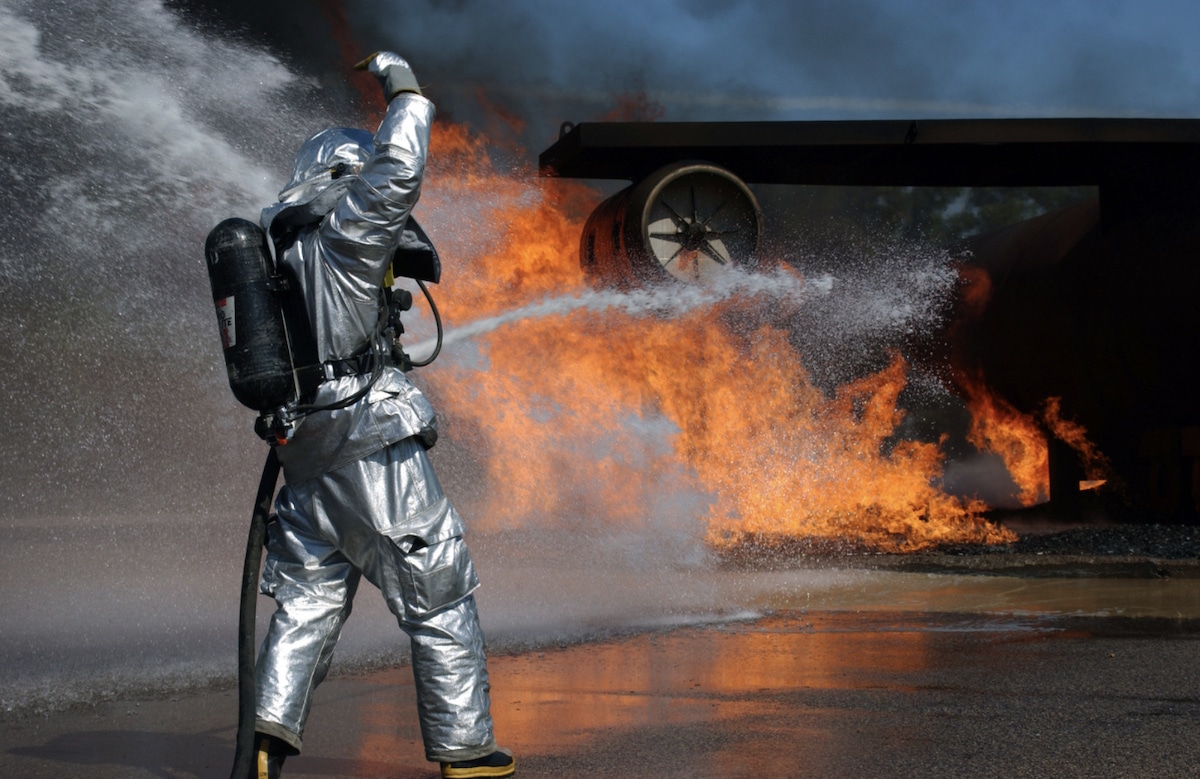EcoWatch – Health – Wellness
High Amounts of a Toxic Forever Chemical Found in Bloodstreams of West Virginia County Residents
Paige Bennett January 21, 2022

A West Virginia Air National Guard firefighter conducts a training exercise at Shepherd Field in 2004. Firefighting foam containing the chemical PFHxS has commonly been used at this location and other military bases. U.S. Air Force photo by Senior Master Sgt. Jeff Rohloff
A new report from the CDC and the Agency for Toxic Substances and Disease Registry (ATSDR) noted high levels of a forever chemical called PFHxS in the blood of people in Berkeley County, West Virginia.
The report found the chemical, which is used in firefighting foam, in the blood of residents in a community located near an Air National Guard base. PFHxS, or perfluorohexane sulfonic acid, is one common PFAS, or per- and polyfluoroalkyl substances. These substances are often referred to as “forever chemicals” because they are synthetic and either resist degrading completely, or they break down slightly into other PFAS that don’t further degrade.
Experts suspect the Shepherd Field Air National Guard Base in Berkeley County is the most likely source of PFAS in the community. This chemical is used in firefighting foam commonly used at military bases. The report found that the PFHxS in the blood of residents here was higher than the average found in blood of people in other communities around the U.S.
“West Virginia is just a snapshot of the widespread problem of PFAS contamination plaguing communities across the United States,” said Scott Faber, EWG senior vice president for government affairs. “Every time studies are released on PFAS, the scope of the problem becomes even clearer, and so does the harm to people who are exposed.”
The report is one of many that are also underway as part of studies conducted by the CDC and ATSDR on PFAS that started in September 2019. They are studying communities located near current and former military bases known to use firefighting foam containing PFAS. The multisite study includes communities in California, Colorado, Massachusetts, New Jersey, New York, Michigan and Pennsylvania.
PFAS are everywhere, including our food, our water, personal care products and more. There are thousands of sources of PFAS, and aside from not breaking down, there are concerns from scientists and public health experts about links between PFAS and health issues, like various forms of cancer.
The CDC and ATSDR study is not meant to find further links between PFAS and cancer, but it does seek to find a better understanding of PFAS and health outcomes.
“The Multi-site Study will collect information about the immune response, lipid metabolism, kidney function, thyroid disease, liver disease, glycemic parameters, and diabetes,” the CDC stated. “CDC/ATSDR will also collect information about cancers, but the size of the study is not large enough for CDC/ATSDR to effectively evaluate the relationship between PFAS exposure and cancer. The Multi-site Study seeks to enroll at least 2,100 children and 7,000 adults from communities exposed to PFAS-contaminated drinking water.”
The report also provides recommendations for the communities to minimize PFAS exposure, including monitoring PFAS in drinking water, having residents with wells test their water for PFAS, and decreasing exposure to PFAS found in consumer products.
